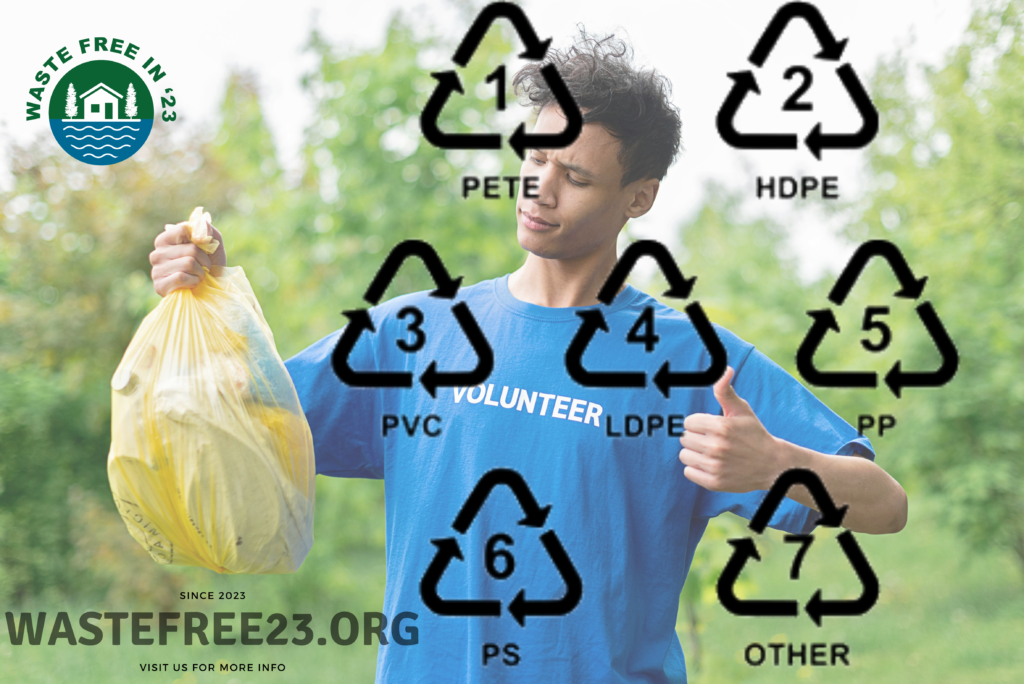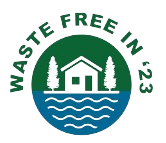How to Sort Plastics for Recycling

Table of Contents
First obvious step is to look for the Recycling Codes on a plastic.

If there’s no sign on the plastic sample, then follow the instructions below to easily and correctly sort plastics for recycling:
You can either do Manual Observation or do Water Test or combination of the two to recognize types
1. Manual Observation
Use the tests in conjunction with the table of observations below.
T. | Action |
1. | Look at the sample. Is it transparent, translucent or opaque? |
2. | Feel the sample. Does it bend? Can it be scratched? What does the surface feel like? |
3. | Cut the sa on mple with a sharp knife. Does it cut easily? Are the edges smooth or jagged? Does it crumble or flake? |
4. | Subject the sample to a float test. Does it float or sink? (Note: not applicable to expanded foam materials. Water should be around room temperature). |
5. | Try to burn a small piece of the sample. What is the size and colour of the flame? Do molten drips fall from the sample and continue to burn? Does the sample self-extinguish? Is there any odour when the flame has been extinguished? |
Now refer to the following to recognize the plastic type:
Material | T | Observation |
Low density polyethylene (LDPE) | 1 | Transparent only as thin film, translucent in thicker sections |
2 | Fairly flexible; soft, ‘waxy’ feel, easily scratched | |
3 | Easily and smoothly cut | |
4 | Floats | |
5 | Not self-extinguishing; molten droplets which usually go out on reaching bench or floor; blue flame with yellow tip and little smoke, smell of burning candle/paraffin when flame is extinguished | |
|
|
|
High density polyethylene (HDPE) | 1 | Transparent only as thin film, translucent in thicker sections |
2 | Fairly stiff and hard, can be scratched by fingernail | |
3 | Easily cut with smooth edges | |
4 | Floats | |
5 | Not self-extinguishing; molten droplets which usually go out on reaching bench or floor; blue flame with yellow tip and little smoke, smell of burning candle/paraffin when the flame is extinguished | |
|
|
|
Polypropylene (PP) | 1 | Transparent only as thin film, translucent in thicker sections |
2 | Stiff; hard, can be scratched by fingernail | |
3 | Easily cut, fairly smooth edges, when cut with chisel leaves white mark | |
4 | Floats | |
5 | Not self-extinguishing; molten droplets which usually go out on reaching bench or floor; flame mainly yellow with a trace of clear blue at the bottom; smell of burning candle/diesel when flame is extinguished. | |
|
|
|
Polyvinyl Chloride, Unplasticised (uPVC) | 1 | Transparent (unless fillers or pigments have been added) |
2 | Stiff; hard | |
3 | Fairly easy to cut, smooth edges | |
4 | Sinks | |
5 | Burns with difficulty, self-extinguishing; yellow flame, blue-green at bottom edges; unpleasant, acrid odour of hydrochloric acid. |
2. Water Test
This easy and no-cost test can very easily differentiate between [ HDPE, LDPE, PP ] and [ PS, PVC, PETE ]
- Prepare a container of water: The water should be around room temperature.
- Place the plastic in the water: Cut a small piece of the plastic and place it in the water.
- Observe the plastic: Does it float or sink?
- Here are the results you can expect for common types of plastics:
Low-Density Polyethylene (LDPE), High-Density Polyethylene (HDPE), Polypropylene (PP): Floats.
But, Polyvinyl Chloride, Unplasticised (uPVC), PETE, PS: Sinks
Differentiating between LDPE, HDPE, PP is easy as tabulated in manual observation section. To differentiate between PVC, PETE and PS refer to the following section.
3. Differentiating between PS, PETE & PVC
Differentiating between PS (Polystyrene), PETE (Polyethylene Terephthalate), and PVC (Polyvinyl Chloride) can be done by observing their physical properties and behaviors:
PETE (Polyethylene Terephthalate): PETE is often used for plastic water bottles. It’s typically clear and lightweight1. When not colored, it appears as a milky white translucent material.
PS (Polystyrene): PS is transparent. It has a higher melting point than PVC, around 464 degrees, but will start decomposing at lower temperatures. It is classified as a highly flammable or “easily ignited” material.
PVC (Polyvinyl Chloride): PVC is often used in plumbing pipes and some toys. It’s a softer, flexible plastic. When not colored, it appears as a white, translucent, waxy material.
You can also watch the video below for further clarification and surety:
How to Recycle Each Type of Plastic
After sorting you can get 7 types of plastics. Some of them can be upcycled into valuable products and some require other ways of recycling:
1. LDPE, PP & Soft Plastics:
LDPE, PP and soft plastics can be recycled into panels using a heat press, which can be sold locally. Also many products can be made this way. Please refer to the WF23 Proudct page in development for the list of products that can be made.
2. HPDE, PET & PVC:
HDPE & PET can be shredded using a plastic shredder and sold. Learn More.
PVC and thermosetting plastic needs to be shredded using a shredder and can be used in concrete.
